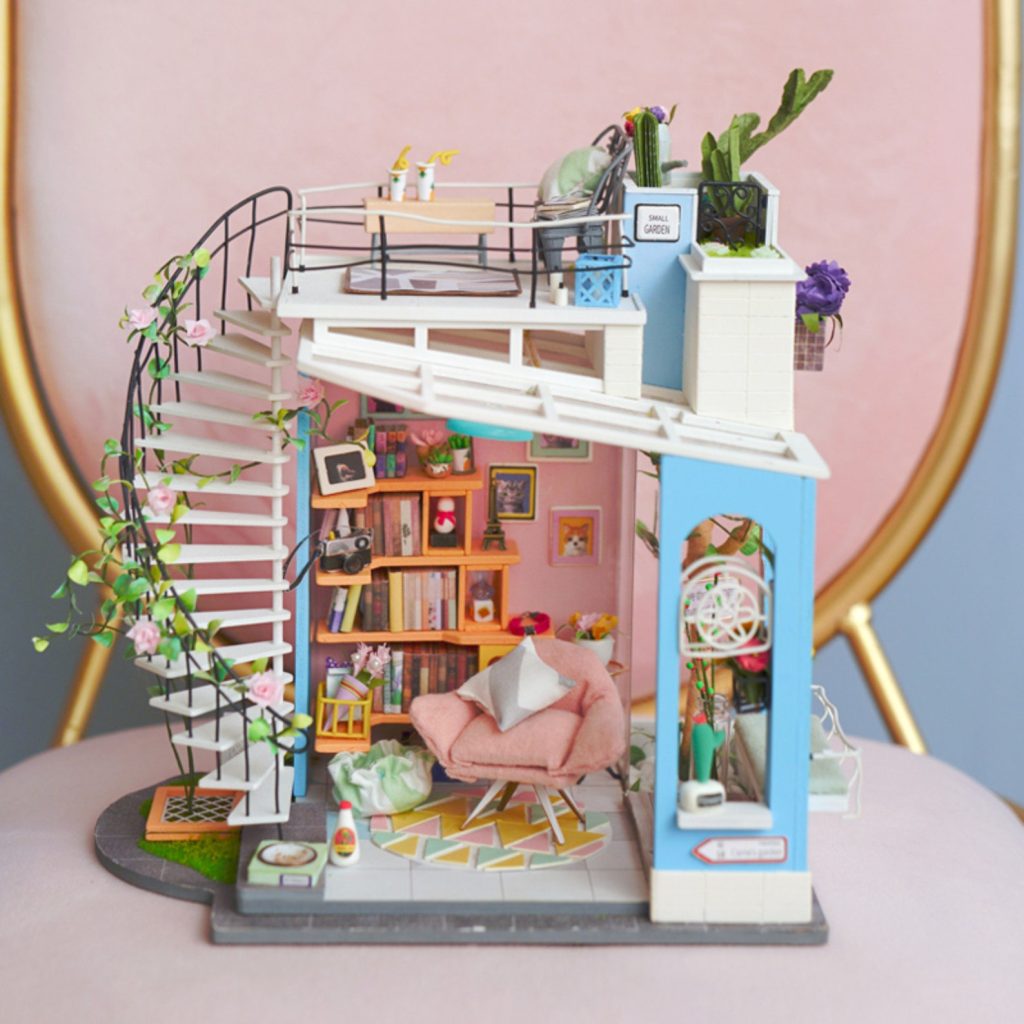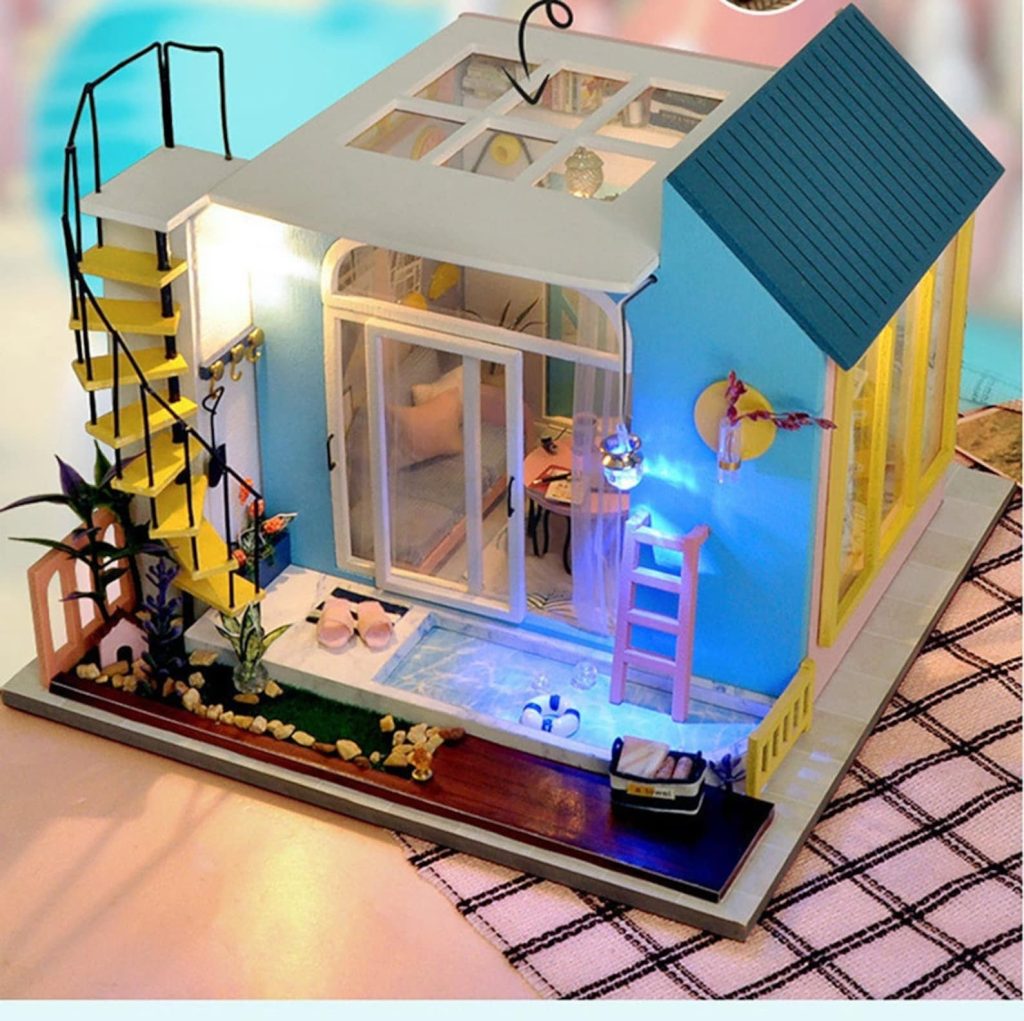Tips
The History of Dollhouses: From Antique Collectibles to Modern Creations
Dollhouses have fascinated collectors, decorators, and hobbyists for centuries. These miniature homes, complete with tiny furniture, intricate decor, and meticulously crafted details, offer a window into different eras and social classes, as well as a delightful outlet for creativity. From their early origins as educational tools to their modern-day role as collectible treasures and home decor pieces, the history of dollhouses is as rich and varied as the homes they represent.
Early Origins: The Birth of the Dollhouse
The origins of the dollhouse can be traced back to the 16th century. The earliest examples were not toys but were used as educational tools for young girls in Europe. These early dollhouses were designed to teach children about domestic life and the responsibilities of running a household. Known as “baby houses” in England, they were often lavishly decorated and furnished, showcasing the latest trends in architecture and interior design of the time.

One of the earliest recorded dollhouses was the “Käthe Kruse Dollhouse,” created in 1673 by German carpenter Heinrich Künzel for his daughter. These early pieces were primarily handcrafted and often reflected the wealth and status of their owners. The focus was less on play and more on showcasing opulent lifestyles.
The 18th Century: The Rise of Collectible Dollhouses
As the 18th century progressed, dollhouses began to shift from purely educational tools to collectible items. During this period, they became symbols of wealth and social status. Wealthy families would commission intricate dollhouses that reflected their own homes’ grandeur. These dollhouses were often elaborate, featuring detailed miniature furniture, textiles, and even miniature artworks.
One notable example is the “Queen Mary’s Dollhouse,” a grand creation commissioned by Queen Mary in the 1920s. Designed by architect Sir Edwin Lutyens, this dollhouse was a marvel of miniature craftsmanship, complete with working lights, running water, and a detailed library. It remains one of the most famous dollhouses in history and showcases the height of early 20th-century miniature artistry.
The 19th Century: Mass Production and Accessibility
The 19th century saw significant changes in the production and accessibility of dollhouses. The Industrial Revolution brought about advancements in manufacturing, which allowed for the mass production of dollhouse components. This democratization of dollhouse production made them more accessible to a broader audience.

During this period, dollhouses were produced using new materials such as tin and cardboard, which were cheaper and more durable than traditional wood. Companies like Lilliput Lane began producing dollhouse kits that could be assembled at home, making it easier for families to own and enjoy their own miniature homes.
Additionally, the 19th century saw the emergence of dollhouses as popular toys for children. These dollhouses were designed for play rather than just display. They often included moveable parts and interactive features, allowing children to engage in imaginative play and simulate domestic life.
The 20th Century: A Revival of Craftsmanship and Collecting
The 20th century brought a resurgence of interest in dollhouses as collectible items. While mass-produced dollhouses remained popular, there was also a growing appreciation for handcrafted, custom-built models. Collectors sought out unique and vintage dollhouses, leading to a renaissance of traditional craftsmanship.
The 1960s and 1970s saw a renewed interest in dollhouses as a hobby and art form. Enthusiasts began to explore historical accuracy, creating dollhouses that represented different historical periods and architectural styles. The rise of dollhouse shows and conventions provided platforms for collectors and hobbyists to showcase their creations and share their passion with others.
During this time, dollhouse miniature manufacturers such as Reutter Porzellan and Bespaq emerged, offering high-quality, detailed miniature furniture and accessories. These companies contributed to the growing market for collectible dollhouse items and helped to elevate the status of dollhouses as serious collector’s items.
Modern Era: Innovation and Personalization
In recent decades, the dollhouse industry has continued to evolve, embracing new technologies and trends. Modern dollhouses are available in a wide range of styles, from traditional Victorian to contemporary designs. Advances in materials and manufacturing techniques have allowed for greater precision and customization.
The advent of 3D printing technology has revolutionized the world of dollhouses, allowing hobbyists to create custom furniture, decor, and architectural elements with unparalleled detail. This technology has made it possible for enthusiasts to bring their unique visions to life and create one-of-a-kind miniature homes.
Furthermore, the rise of online communities and social media has connected dollhouse enthusiasts from around the world. Platforms like Instagram and Pinterest have become popular spaces for sharing dollhouse creations, exchanging ideas, and finding inspiration. Online marketplaces also offer a vast array of miniature items, making it easier than ever to find the perfect pieces for any dollhouse project.
Dollhouses as Art and Therapy

Today, dollhouses are appreciated not only as collectibles but also as art forms and therapeutic tools. Many artists use dollhouses as a medium to explore themes of scale, perspective, and human experience. The intricate craftsmanship and attention to detail involved in creating a dollhouse make it a unique form of artistic expression.
In addition, dollhouses are increasingly recognized for their therapeutic benefits. The process of designing, building, and decorating a dollhouse can be a calming and meditative activity. It provides a creative outlet for individuals to express themselves and engage in mindful, hands-on work. For some, it offers a way to cope with stress, anxiety, and even trauma.
Conclusion
The history of dollhouses is a fascinating journey that reflects changes in society, technology, and art over the centuries. From their origins as educational tools for young girls to their status as cherished collectibles and creative outlets, dollhouses have continually evolved while retaining their charm and allure. As we look to the future, it’s clear that the dollhouse will continue to inspire and captivate those who appreciate the art of miniature living.
Whether you’re a collector, a hobbyist, or simply someone who enjoys the beauty of finely crafted miniatures, the world of dollhouses offers endless possibilities for exploration and enjoyment. As we continue to innovate and create, the history of dollhouses will undoubtedly continue to unfold, adding new chapters to this timeless tradition.

